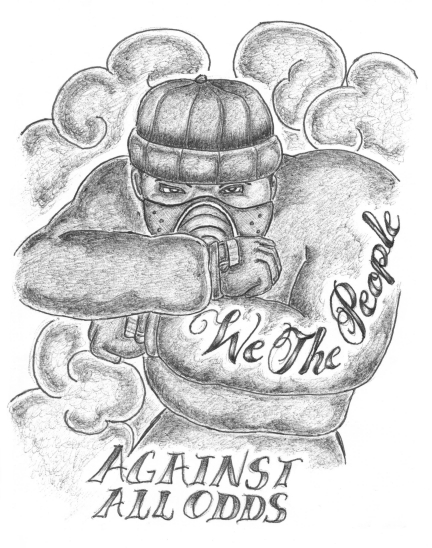
Notes on Advancing the Struggle Inside: Unity – Colorado Unity

by a Colorado prisoner and El Independista
First and foremost, we would like to thank ULK for being a platform to spread the message of prisoner united fronts and solidarity within these dungeons. ULK has been a big part of helping in reeducation and enlightenment. To us revolutionaries, who are the tip of the spear here in Colorado, ULK is a great tool. We hope this brief update gives encouragement to all of us conscious of our battle against capitalism, its social-control mechanism – mass incarceration – and use of prisons as modern day slave camps.
Here in Colorado, with hard work and much determination, many different groups have come to the realization of subversive tactics the state and badge engage in to divide and conquer. Exploiting gang rivalries, perpetuating violence by manufactured conflicts through “set-ups” of STG members, and at times, nation unrest. After years of watching the badge laugh it up, get pumped off the live action, replaying videos of their puppet mastery, enjoying their own pithy commentary for amusement, pursuing judicial redress (criminal convictions) for violence they made possible and encouraged, freely and gleefully using chemical warfare, tazers and non-lethal weaponry (for some reason these always seem to be headshots, although this is strictly against written policy!) – with the help of many different group leaders, violence between rivals, L.O.s has stopped, almost state-wide.
For us at the spear’s tip, some critics recriminate and admonish – we’ve gone down in flames, being removed from population to areas sufficiently isolated; all our privileges (telephone, canteen, TV, visits, etc.) removed, subject to out-of-state transfer. The badge resort to textbook “cointelpro” tactics: spreading misinformation, rumors, delaying or stopping mail. Worker pigs, “porkers,” trying to revitalize dessicated STG-conflicts to take the spotlight off of them. Any means necessary to escape the repercussions. But, out of the ashes has risen a mighty phoenix, one that has sent a cold chill down our oppressor’s back.
We’ve demonstrated that real leadership is based in action, not handicapping our people, but rather in providing the knowledge, tools and freedoms to act. Setting examples of sacrifice, tenacity and hard work. Understanding that the struggle to change minds is hard even with the truth staring some in the face; some would rather desperately clutch at what’s most familiar and be a stubborn hindrance to those of us conscious and progressing the movement. That is human nature, it will take patience. No matter how many obstacles, as long as you keep the big picture in your mind nothing else matters. Those of us answering the call must cherish that we will never know the comforts of the meek. It is a long, hard road, but we can be proud we are doing our part and did not look away. If we are not willing to risk the usual, we will have to settle for the ordinary. This would very much please capitalists and their contributors, were we to become subjugated.
Self-determination is our only path. Take up one cause (i.e. removing capitalism), make that one cause your life, think of it, dream of it, live on that cause, let the brain, muscles, nerves, every part of your body be full of that cause, and just leave every other idea alone. This is the way to success. Success is walking from failure to failure with no loss of enthusiasm. One or many defeats in battles do not constitute loss of the war; remember the big picture. Great minds discuss ideas, average minds discuss events, small minds discuss people. Of the latter there are two kinds who will tell you that you can not make a difference: 1) those who are afraid to try; and 2) those who fear you will succeed where they can not. (1)
We suggest, start where you are, use what you have, do what you can. It is not the critic who counts, not the one who points out how the strong stumble, or where and how a doer of deeds could have done them better. The credit belongs to the man in the arena, whose face is marked by dust, sweat, blood; who strives valiantly, who knows the great enthusiasms, the greater devotions, who spends himself in a worthy cause, who at best, knows in the end the triumph of high achievement, and who, at worst, if he fails, at least, fails while daring greatly, so that his place shall never be among those cold, sententious, timid souls who have never known victory nor defeat.
To those who, like us revolutionaries here in Colorado, understand and struggle for a united prisoner movement: We tip our hats to you all. The fight is hard, and well worth the effort, sweat, blood, deprivations and temporary setbacks. Change is happening, change is coming.(2)







